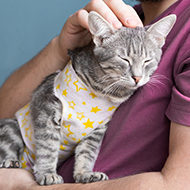
Researchers study how video calls can improve care.
A study of pet owners in the US and Canada has revealed that telehealth could improve care for cats with chronic health issues, specifically feline arthritis.
Researchers at the University of California, Davis, surveyed 106 owners of cats with mobility issues, with some participating in six video appointments. They found that when pet owners can ask questions and get non-medical advice it can be beneficial.
Moreover, more than 95 per cent of participants said they would pay for telehealth visit — although most were willing to pay a little less for an in-clinic appointment. The findings are published in the journal, Frontiers in Veterinary Science.
Study lead Grace Boone, assistant specialist in the UC Davis Animal Welfare Epidemiology Lab, said: “Teleadvice is meant to provide advice and support for caregivers caring for their cats. We found that overall everybody was quite interested in video telehealth for home management of their cats and their mobility issues.”
The pet owners who participated in the home video sessions were asked general questions about their cat’s wellbeing and mobility. Suggestions like elevated food and water bowls or larger litter boxes were offered if the owners asked for advice.
Interestingly, pet owners who participated in these sessions reported that it helped them understand their cats’ needs, making them more confident in how they cared for their cats.
Senior author Carly Moody, an assistant animal science professor at UC Davis, added: “There’s a lot of in-home modifications that can be implemented to increase cat comfort in the home. Telehealth allows veterinary professionals to see and understand the cat’s home environment and make recommendations which can be helpful for the cat.”
Image © Shutterstock



 RCVS Knowledge has called on vet practices to audit their post-operative neutering outcomes.
RCVS Knowledge has called on vet practices to audit their post-operative neutering outcomes.